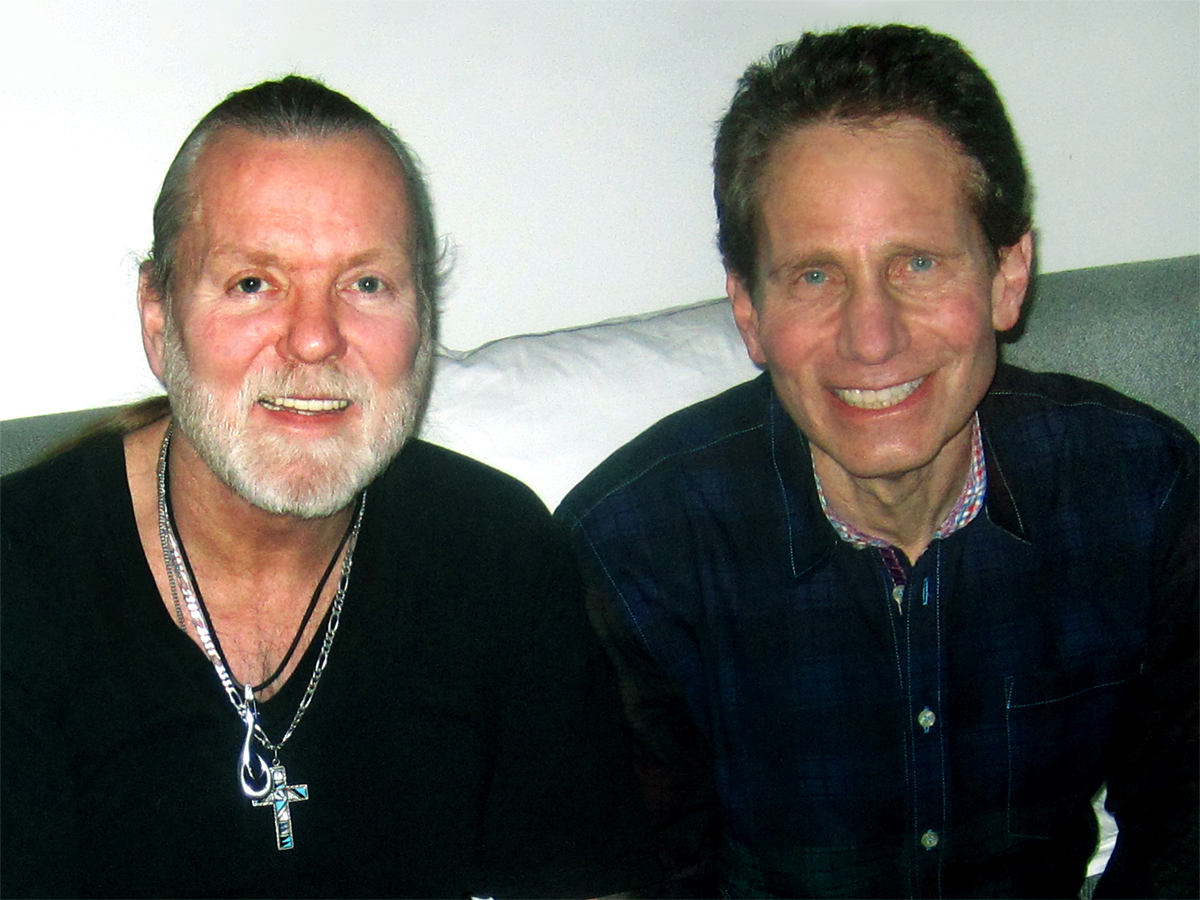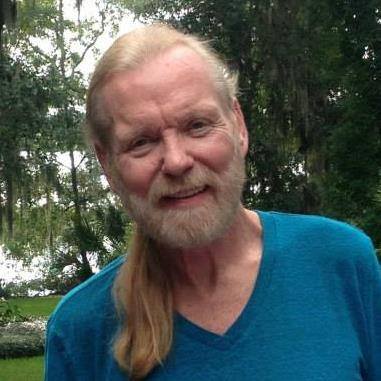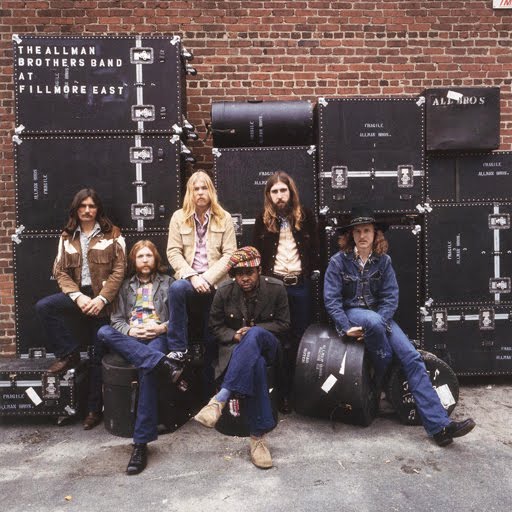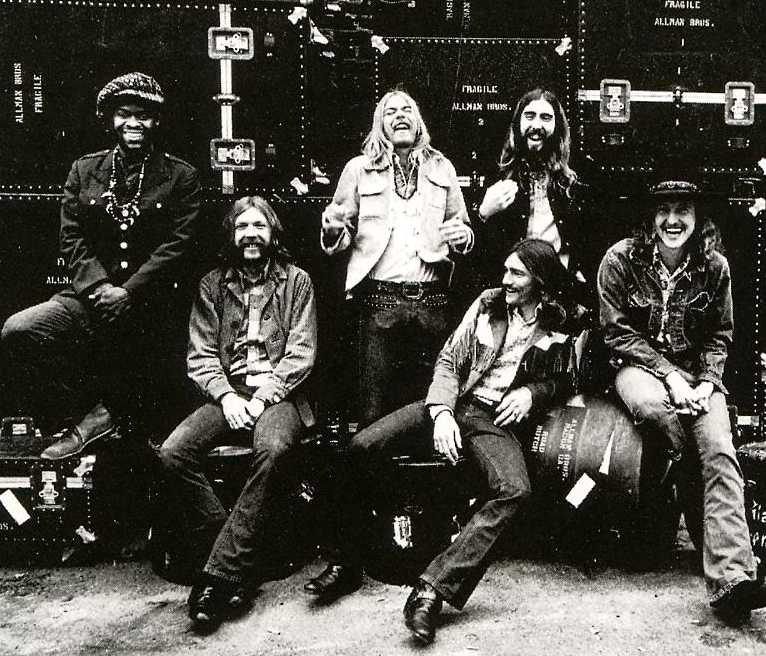
[This story originally appeared in 2016 and is from an interview that radio legend Dennis Elsas did with Gregg Allman in 2011.]
Now in his late ’60s, Gregg Allman is not merely a survivor. And that’s in defiance of expectations and the odds. Haunted by the tragic deaths of his brother Duane in 1971 and Allman Brothers Band bassist Berry Oakley a year later, his past substance abuse issues are all but legendary. He has faced serious health problems during the last decade. Yet he has recently been making some of the best music of his life.
Born on Dec. 8, 1947, he was able over the last quarter century or so to not just regroup the Allmans as an active touring and recording act but rebuild their musical brand to levels of respect and acclaim that equaled their early ’70s heyday. And then in 2014 called it a day for the band on a high note.
In 2012 he published a well-received memoir, My Cross to Bear. In 2015, he released a live album/DVD, Back to Macon, GA, that won him acclaim. His final studio album, Southern Blood, was released posthumously.
Related: Jimmy Carter, Cher attend Gregg Allman’s funeral
Dennis Elsas spoke with Gregg for WFUV back in early 2011 when his current upswing began with his Low Country Blues album on which he rendered some of his favorite classic blues numbers (alongside one new original song), produced by T-Bone Burnett. In their talk we learn about his early blues education, why he avoided the studio for a spell, and a little-known secret about the artwork on the Allman Brothers’ At Fillmore East album. (You can also listen to their conversation on Dennis’ website.)
Elsas is, as many Best Classic Bands readers know, one of the most respected album rock air personalities in the nation. From a quarter-century-plus stint as a DJ and music director at WNEW-FM to his endeavors today as afternoon drive host at the esteemed WFUV and as co-host of the weekly Beatles talk and “call-in” show, “Fab Fourum,” heard exclusively on the Beatles Sirius/XM Channel (18) plus weekend shifts on Sirius/XM’s Classic Vinyl Channel (26), he has earned the regard of listeners and artists alike. Dennis occasionally presents his Rock ‘n’ Roll Never Forgets live multimedia show, a real treat that greater New York metro area rock fans should not miss. He celebrated his 50th anniversary on New York radio in 2021.
Dennis Elsas: When I listened to the Allman Brothers for the first time back in the late ’60s and early ‘70s, I didn’t know some of those songs were old blues songs. I thought those songs were all Allman Brothers songs. In a way, the Allmans were one of those bands that gave my generation a little education into the blues, because you were sharing for us music that you had gotten turned on to. How did you get turned on to all that music?
 Gregg Allman: There was this radio station [WLAC in Nashville], there was Big John R. [John Richbourg] and Herman Grizzard. Big John R died a few years ago and I got to meet him before he died. But back when everybody else was listening to The Beach Boys, this station came on and had bottle club hours. [laughs] So it didn’t come on until 9 or 10 and I stayed up ‘til 5. And they had different shows and they played Howlin’ Wolf. They played Muddy. They played B.B. I got turned onto Little Milton for the first time. And at night Herman Grizzard took over and he had a jazz show and that’s when I first heard Hammond organ, first heard Jimmy Smith. First got turned onto jazz. And I thought, man this is… why can’t we get a player just to play all this? But it would come on late at night. I don’t know why we didn’t think of just sitting there and recording it all and compile all the tunes but it sure enriched our entire repertoire, that’s for sure.
Gregg Allman: There was this radio station [WLAC in Nashville], there was Big John R. [John Richbourg] and Herman Grizzard. Big John R died a few years ago and I got to meet him before he died. But back when everybody else was listening to The Beach Boys, this station came on and had bottle club hours. [laughs] So it didn’t come on until 9 or 10 and I stayed up ‘til 5. And they had different shows and they played Howlin’ Wolf. They played Muddy. They played B.B. I got turned onto Little Milton for the first time. And at night Herman Grizzard took over and he had a jazz show and that’s when I first heard Hammond organ, first heard Jimmy Smith. First got turned onto jazz. And I thought, man this is… why can’t we get a player just to play all this? But it would come on late at night. I don’t know why we didn’t think of just sitting there and recording it all and compile all the tunes but it sure enriched our entire repertoire, that’s for sure.
DE: This is the first Gregg Allman solo album in a long time. And I had heard that after [producer] Tom Dowd died, you were hesitant to go into the studio with a stranger. Is that true?
GA: Oh, yeah. Very. Yeah, after Tommy died, I got real skittish about it. I just dived into the live performing more than anything. I don’t know, man, the years just got away.
DE: So who said, we want you to maybe meet this guy T-Bone Burnett. How did that come about?
GA: That was my manager, Michael Lehman. I was on a tour with the Brothers and it was coming to a close. We were somewhere around Detroit or Minneapolis, and he came out and I had never met him before. I didn’t know him from Adam’s house cat. I don’t know how I escaped it because he already had a bunch of big hits, the movie Oh Brother, Where Art Thou? So I said, what are you doing in town? He said I have a couple of builders with me. I’m measuring the Sun Studios board by board so I can go back and build it on this piece of land next to my house. (laughs) I thought, man, that’s got to be the hippest thing I ever heard of. We started talking, we really got along well. He had this modem that somebody had given him with all these old obscure blues songs. He said, why don’t I peel off about 25 of them and I’ll send them to you on a disc and you find 15 of them that you would like to record, and see what we got. So we went into the studio. I don’ know, it all just fell together. It’s really amazing; a whole lot of magic going on.
DE: Listening to the album…. For me, the fun thing is I get a brand new album, especially one I’ve been looking forward to. I put it in the car and I take a long ride. And I just kind of see what hits me. I got hooked in the middle of the record with “Just Another Rider.” For my ears, that is the classic Allman sound. And I don’t know whether you were looking to write another classic Allman sound. But it’s there.
GA: (laughs) That’s strange. I can’t really hear that. Not like you can.
DE: I don’t know if it’s the way that you’re singing it. If it’s the words. The first time I introduced it on the radio I said, “Oh, ‘Just Another Rider,’ maybe this is the continuation of ‘Midnight Rider.’” That’s how a DJ’s brain works… wants to relate everything. But then you just put it on, the lyrics are in a different place but there’s just that classic sound. And you’re home. I’m back in my Allmans comfort zone. (Allman laughs) And I’m like. yeah, that’s what I bought the ticket for.
GA: In your comfort zone.
DE: Anything you want to tell us specifically about “Just Another Rider?”
 GA: It’s just a song that Warren [Haynes] started it, the basic idea, which started with like a main line. It took a while. When he moved away from Sarasota for a while, we had some changes within the band. And people got married. It seemed like all that happened at once. Geez. Anyway, Warren moved to New York. I don’t see him that much anymore. But when I do we usually sit down and start writing something. So this definitely wasn’t like a forced thing with like a deadline on it. I don’t play that deadline stuff. I’ll have something written and he’ll start finishing it up and vice versa. We make a pretty good team.
GA: It’s just a song that Warren [Haynes] started it, the basic idea, which started with like a main line. It took a while. When he moved away from Sarasota for a while, we had some changes within the band. And people got married. It seemed like all that happened at once. Geez. Anyway, Warren moved to New York. I don’t see him that much anymore. But when I do we usually sit down and start writing something. So this definitely wasn’t like a forced thing with like a deadline on it. I don’t play that deadline stuff. I’ll have something written and he’ll start finishing it up and vice versa. We make a pretty good team.
Related: Our Album Rewind of the ABB’s Brothers and Sisters
DE: Is there a snapshot somewhere in your head of the Fillmore other than the one you’ve seen on the album cover all these years?
GA: Actually there kind of is. First of all, the pictures on the Fillmore East record were taken… at the Fillmore West. (laughs) Not many people know that. (laughs) Ain’t that something? Because the Fillmore East was like a theater and the Fillmore West had these silk things hanging from the ceiling. And when you open it, the picture that’s right here you can still see all those silk tapestries hanging from the ceiling. That was a stone hippie place.
Best Classic Bands is pleased to be publishing excerpts of many of Elsas’ interviews with classic rock legends as a regular feature: The Dennis Elsas Conversation, including ones with Robert Plant, John Fogerty, Roger Daltrey and Bill Wyman.
Related: Our conversation with Devon Allman and Duane Betts
[easy_sign_up title=”Sign up for the Best Classic Bands Newsletter”]
- Dan Fogelberg Interview: ‘Same Old Lang Syne’ - 12/31/2023
- The Inside History of the Electric Light Orchestra - 11/25/2023
- Donovan on ‘Season of the Witch’: ‘The Spookiness Was Real’ - 10/31/2023

